The FIFA Women’s World Cup is officially underway, as host nations Australia and New Zealand kicked off the hotly anticipated tournament this morning.
The USWNT plays its first match tomorrow night, and we’re breaking down every angle of the event — from the Americans’ chances at a three-peat and the challenges associated with watching games to the controversy around pay equality and how the action is being received Down Under.
Enjoy this special Women’s World Cup Takeover newsletter edition.
— David & Eric
|
|
|
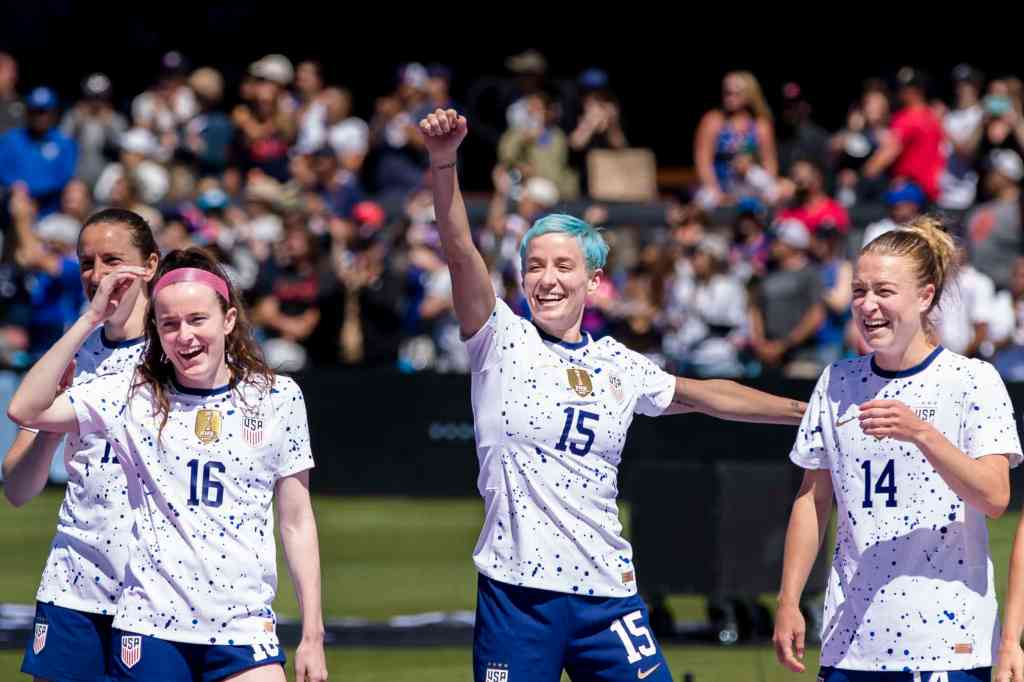
|
John Hefti-USA TODAY Sports
|
|
The U.S. men’s basketball “Dream Team” went from Olympic dominance to medal disappointment in a span of just 12 years. The U.S. Women’s National Soccer Team is trying to avoid a similar fate in the 2023 Women’s World Cup — and faces an expanded and improved field in its bid for an unprecedented three-peat.
The two-time defending tournament champions will play their first game Friday at 9 p.m. ET (Saturday in New Zealand) against Vietnam. But this time around, the road to success that catapulted the U.S. team to global fame and glory in 2015 and 2019 will be undoubtedly more difficult.
The Americans remain the betting favorites, but the WWC field grew from the 24 teams to 32 — the largest ever. The USWNT’s Group E includes the Netherlands, the 2019 runner-up, and the talent gap between traditional powers such as the U.S., England, Germany, and Japan, and the rest of the world is quickly narrowing.
“The world that is catching up is Wales, is Vietnam, is Zambia, Portugal,” said USWNT coach Vlatko Andonovski. “No game is going to be easy.”
Since the 2019 title, USWNT stars including Alex Morgan and the retiring Megan Rapinoe have become household names, winning a slew of major awards and generating millions of dollars in endorsements. Rapinoe also became an outspoken voice on a wide range of social and political issues, and gender pay equity in soccer.
But the team is well aware that the off-field activity and cultural currency are predicated on continued on-pitch success.
“There’s more everything. But nothing happens without what happens on the field,” Rapinoe said earlier this year.
|
|
|
|
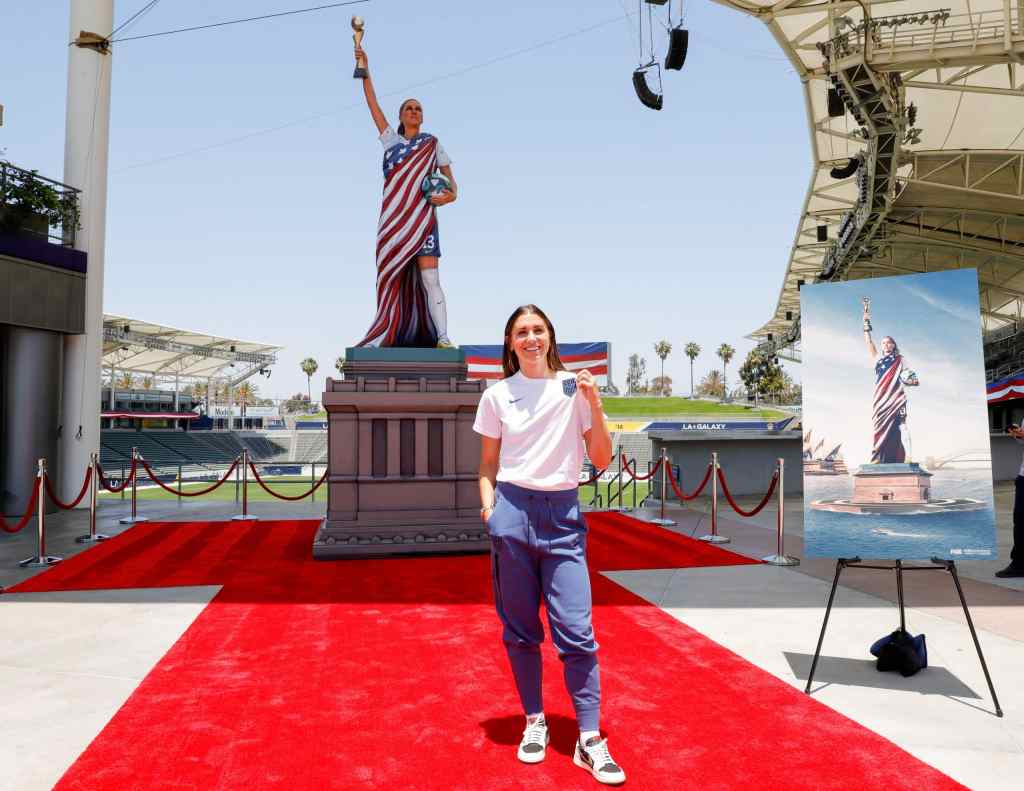
|
American fans tuning into the Women’s World Cup will endure a complicated viewing experience trying to follow the action from Australia and New Zealand — over a dozen time zones ahead of the U.S..
Time differences are likely one reason FIFA reportedly missed its mark on media rights revenue for the tournament by $100 million. Outside of a few handpicked matches, most games will take place in the middle of the night for the U.S. and early morning in Europe — where FIFA greatly struggled to find broadcast partners.
The USWNT gets a pair of 9 p.m. ET group-stage matchups against Vietnam on Friday and Netherlands on July 26, but faces Portugal at 3 a.m. ET on Aug. 1. If the U.S. wins its group, it’ll get primetime games in the Round of 16 and quarterfinals, while a second-place finish would garner middle-of-the-night matches.
Either way, the semifinals and final start at 6 a.m. ET or earlier.
Fox is showing the World Cup in the U.S. as part of an overarching — and controversial — deal with FIFA extending its original $425 million contract for events from 2015-22 at a slight price markup. Overall, FIFA is bringing in $200 million in media fees, according to the Wall Street Journal.
Docuseries In The Making
Netflix is following the USWNT in Australia and New Zealand, filming a docuseries on the team’s efforts for a third-straight World Cup title that will be released this fall.
All key players will be featured in the show — including co-captain Alex Morgan and Megan Rapinoe, who is playing in her final World Cup.
|
|
|
|
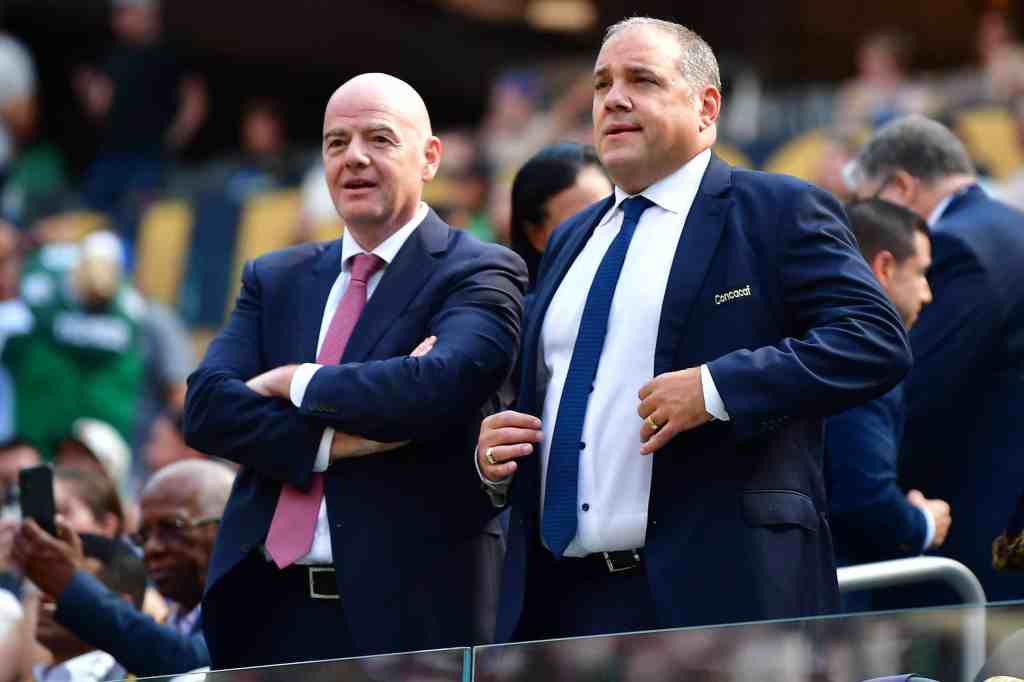
|
Gary A. Vasquez-USA TODAY Sports
|
|
The 2023 Women’s World Cup begins as FIFA hopes to highlight the strides it is taking in women’s soccer — and deflect criticism over pay disparity with the men’s game.
Prize money totalling $110 million is more than three times the $30 million paid out at the 2019 event but still just 25% of the $440 million awarded to men’s teams in Qatar last year. FIFA has set a goal of offering equal prize money at the respective 2026 and 2027 men’s and women’s tournaments — although it’s unclear how that will be achieved.
“It’s a moment to focus on the positive, focus on the happiness, focus on the joy,” FIFA president Gianni Infantino said — adding that he would discuss deeper issues in the game after the World Cup concludes next month.
FIFA expects to break even for the Women’s World Cup, Infantino said, anticipating about $500 million in revenue.
It was previously announced that players would receive at least $30,000 each no matter where their team finished, with the players on the winning squad each earning $270,000.
However, Infantino clarified on Wednesday that those payments go to nations’ soccer federations, and FIFA couldn’t guarantee that every organization would pay that money to its players. “More than auditing or monitoring, it’s engaging,” Infantino said of how FIFA hopes to make sure those federations do what they are supposed to with prize money.
FIFA has reported than the global average annual salary for a female soccer player is $14,000 — so Infantino’s statements will certainly not go unnoticed by the 732 players competing in Australia and New Zealand.
|
|
|
|

|
It’s been more than a generation since Australia has commanded the global sports stage, and co-host New Zealand has arguably never gotten close. And before the Women’s World Cup even started, the countries’ hosting progress had dramatically diverged.
In Australia’s biggest event since the 2000 Sydney Olympics, the country has sold about 1 million tickets — the bulk of total tournament ticket sales of nearly 1.4 million, already confirmed to be a WWC record.
In New Zealand, the opposite has largely been true. Slow activity prompted FIFA president Gianni Infantino to plead for more sales, adding to a sponsored allocation of 20,000 free tickets, while the overall WWC reception has been relatively muted.
“New Zealand, we want you. We need you,” Infantino said. “It’s never too late to do the right thing.”
Though the two countries merged WWC hosting bids in 2019 and have been working together since, the separation isn’t surprising. Australia’s population, more than 25 million, is five times as large as New Zealand’s 5 million. Many fans need two separate travel visas to see matches in both countries.
The reputation of Sydney — already set to host one semifinal and the final in its Stadium Australia — is also burnished by the new Sydney Football Stadium, which will host a series of group-stage matches and a round-of-16 contest.
The 40,583-seat facility, rebuilt on the grounds of the original Sydney Football Stadium, is described as a “stadium in the park” and boasts design and environmental features far beyond other facilities in the region.
|
|
|
|
- Check out Nike’s new ad for the USWNT’s Sophia Smith: “Nice to Beat You.”
- Nike and Martine Rose tailored custom suits for the USWNT ahead of their World Cup campaign.
- Roger Bennett, founder of the Men in Blazers media network, suggested that the U.S. has had a structural advantage in women’s soccer: “Title IX exists in the United States. It doesn’t exist anywhere else in the world.”
|
|
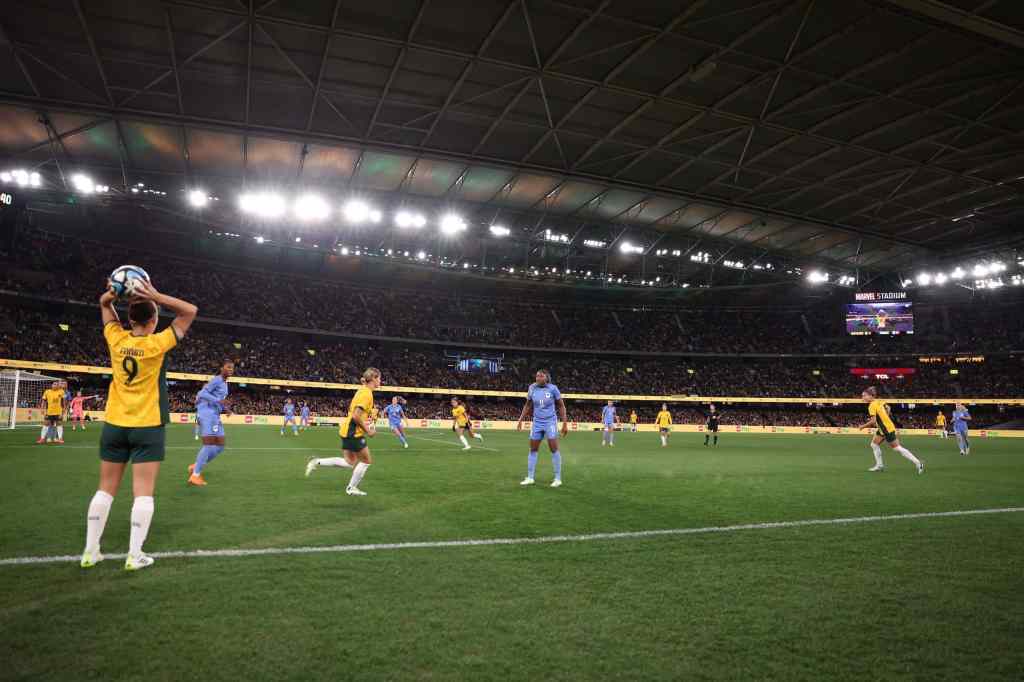 | The national team of host country Australia is calling out FIFA. |
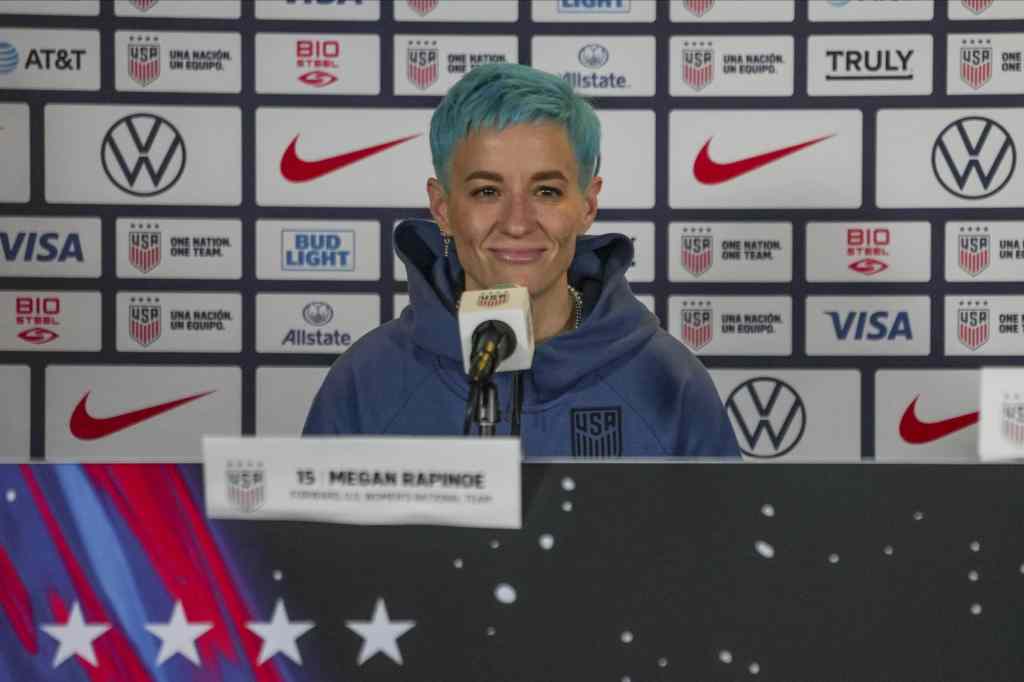 | Hoping to capitalize on momentum, Fox Sports has prepared an ambitious plan. |
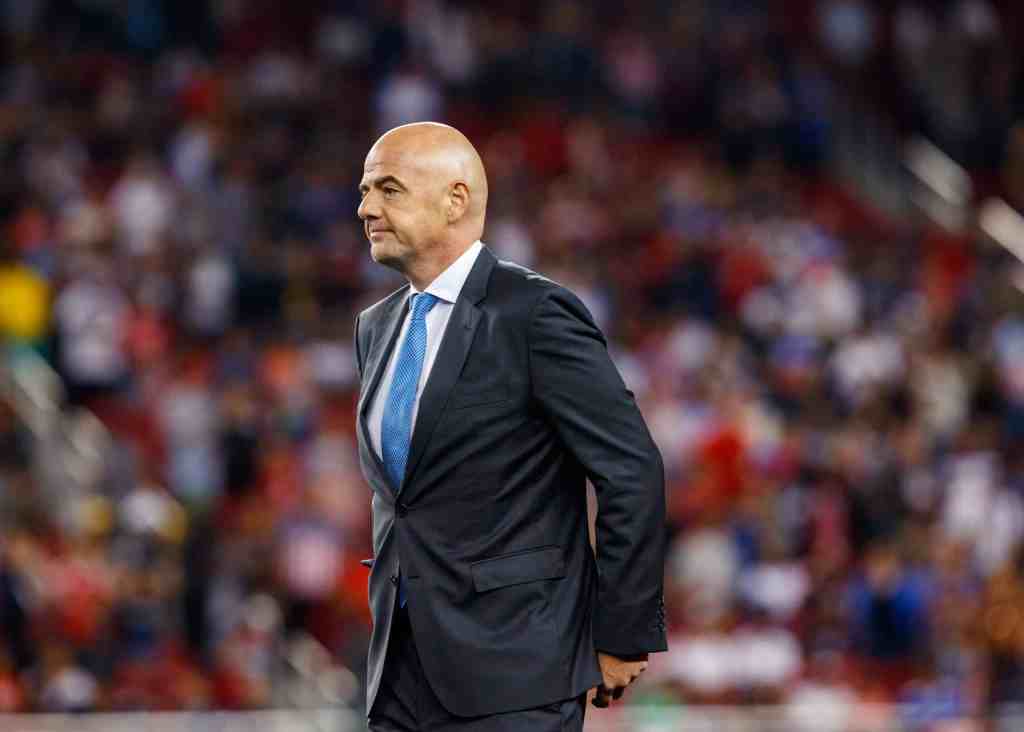 | FIFA's first year
selling Women's World Cup broadcast rights was a letdown. |
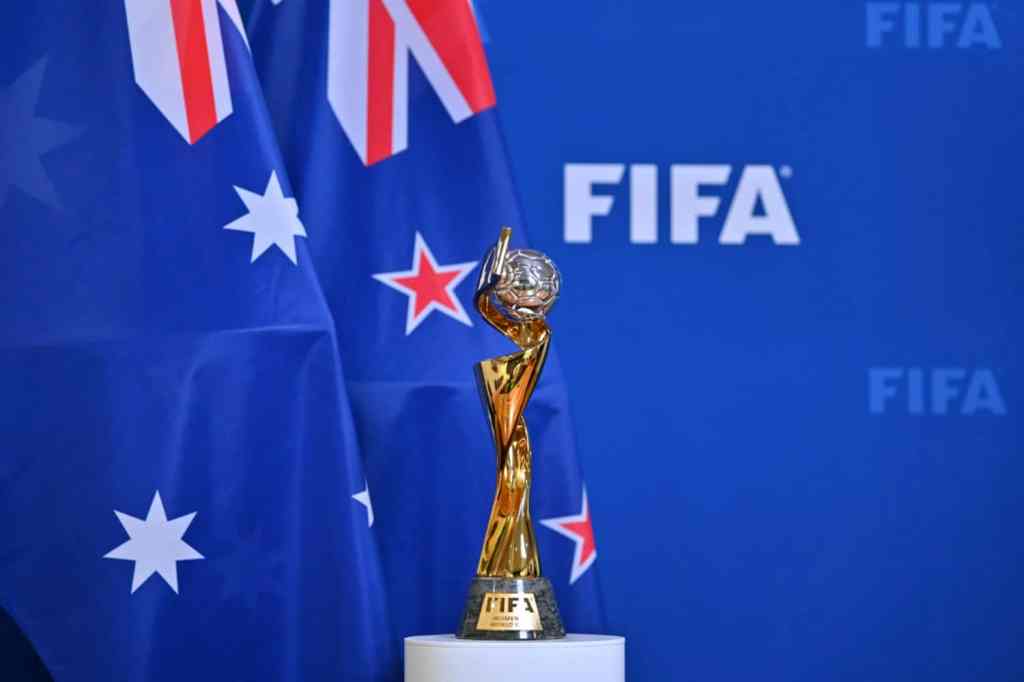 | The FIFA Women's World Cup
begins July 20 in Australia and New Zealand. |
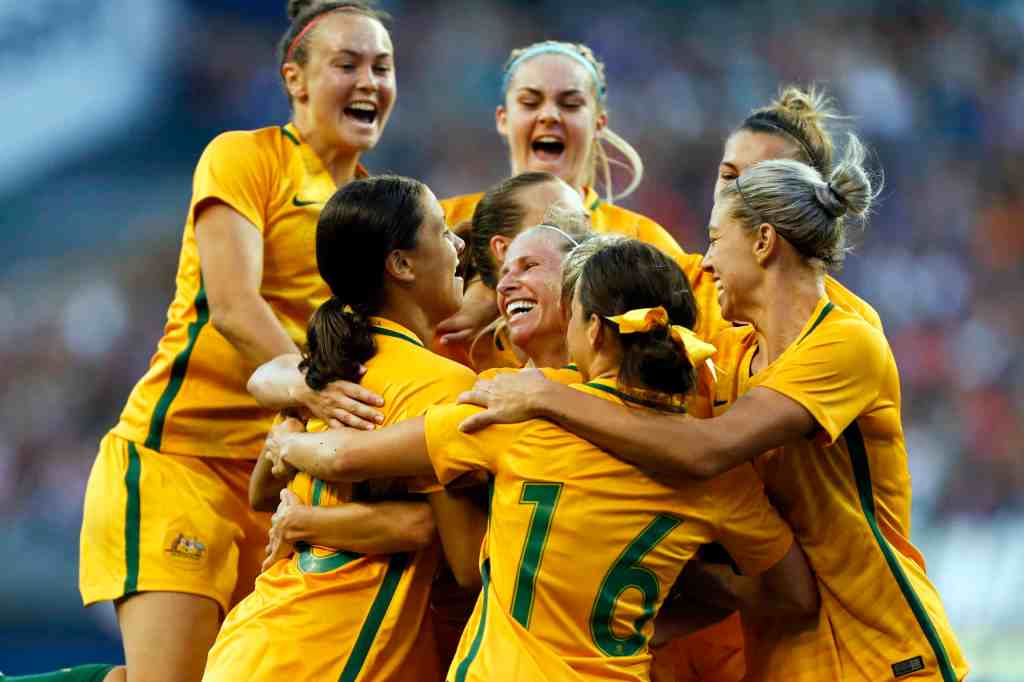 | Ticket demand is growing for the FIFA
Women's World Cup. |
|
|
Would you be interested in watching or attending a rugby match?
|
|
Wednesday’s Answer
51% of respondents drink energy drinks.
|
|
|



